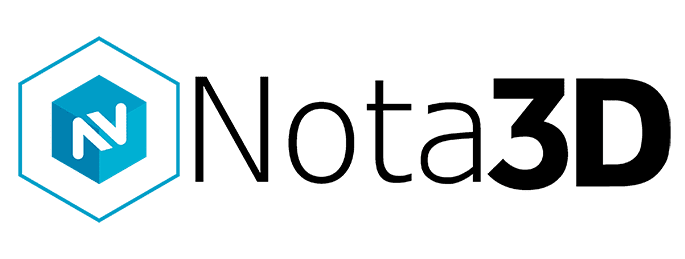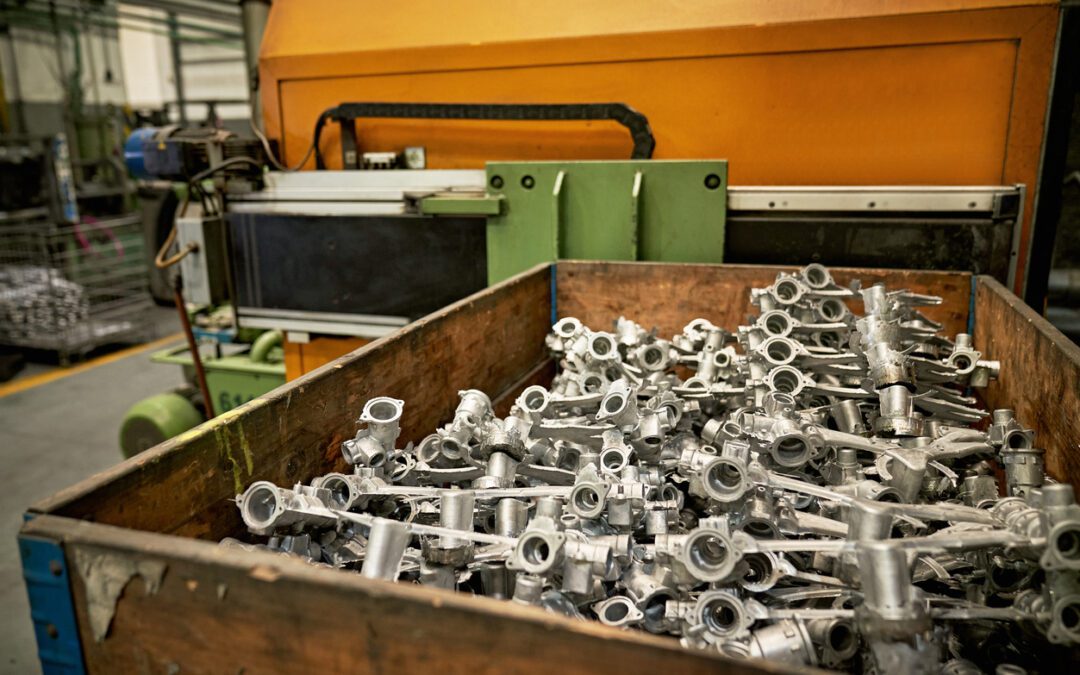Benefits of Combining Metal Casting with 3D Printing
Metal casting is a metalworking process in which molten metal cools and solidifies in a mold to form metal parts. Despite its ancient roots, metal casting is still one of the most popular processes for companies looking to produce metal parts.
Metal casting is a popular process in making metal parts due to its versatility, scalability, and cost-effectiveness. Casting allows for the production of complex shapes and intricate details that may be challenging or costly to achieve using other manufacturing methods. It is a highly adaptable process that can accommodate various metal alloys, providing a wide range of material options to meet specific performance requirements. Additionally, casting is a scalable process, making it suitable for both high-volume production and small-scale manufacturing. The tooling costs associated with casting are often lower compared to other techniques like machining, making it a cost-effective solution for producing metal parts. Furthermore, the ability to recycle and reuse excess casting materials contributes to its sustainability. Overall, metal casting offers manufacturers a reliable and efficient method for producing a wide variety of metal parts, making it a popular choice in numerous industries.
This article will cover what metal casting is, how it works, and the benefits of combining modern digital tools like 3D printing with traditional metal casting.
How Does Metal Casting Work?
Traditional metal casting is a manufacturing process that involves the pouring of molten metal into a designed mold, allowing it to solidify and take the shape of the desired part. The process begins with the creation of a pattern, which is a replica of the final part to be produced. The pattern is typically made of wood, plastic, or metal and represents the shape, features, and dimensions of the desired part. Today, 3D printing is also a common method to produce patterns, which allows designers to create accurate patterns directly from digital CAD software tools.
Next, a mold is created by placing the pattern into a container called a flask. The casting mold can be either reusable (non-expendable) or non-reusable (expendable). Non-reusable molds are usually made out of sand, plaster, wax, or by 3D printing, and just as the name suggests, they get destroyed in the casting process. Reusable molds are made out of metal and other durable materials and can be reused for multiple casting cycles. Reusable molds are made out of metal and other durable materials and can be reused for multiple casting cycles.
The flask is divided into two halves, known as the cope and drag. Sand, clay, or other molding materials are packed around the pattern inside the flask, forming a cavity that will shape the molten metal. Once the mold is complete, the pattern is removed by pulling it out or breaking it apart, leaving a cavity in the mold that corresponds to the shape of the desired part.
The next step is to melt the desired metal alloy in a furnace at high temperatures. Once the metal reaches its molten state, it is carefully poured into the mold cavity through a gating system. The gating system consists of channels and vents that allow the molten metal to flow smoothly into the mold while minimizing defects like air entrapment. The molten metal fills the mold cavity and begins to solidify as it cools. The cooling rate is carefully controlled to ensure proper solidification and minimize the formation of defects.
As the metal solidifies, it takes on the shape and details of the mold cavity. After the metal has completely solidified, the mold is allowed to cool further until the metal reaches a temperature that is safe to handle. The flask is then opened, and the solidified casting is removed from the mold.
The casting may require various finishing operations, such as removing excess material, cleaning up rough surfaces, and adding final touches like machining, grinding, polishing, or heat treatment to achieve the desired dimensional accuracy, surface finish, and mechanical properties.
Metal Casting With 3D Printing
Combining metal casting with 3D printing, often referred to as hybrid manufacturing, brings together the advantages of both technologies and offers several significant benefits. Here are some key benefits of combining metal casting with 3D printing:
- Complex Geometry and Design Freedom – By leveraging the design flexibility of 3D printing and the material properties of metal casting, complex geometries and intricate designs can be achieved. This combination allows for the creation of highly customized parts with internal features, undercuts, and complex structures that are challenging to produce using traditional casting methods alone.
- Improved Efficiency – Metal casting with 3D printing can enhance the efficiency of the manufacturing process. Instead of manufacturing an entire part using 3D printing, which can be time-consuming and costly for larger components, the hybrid approach allows for the production of complex sections or features through additive manufacturing, while the rest of the part is created using traditional casting methods. This way, the overall production time and cost can be reduced while maintaining the benefits of both technologies.
- Scalability and Production Flexibility – Metal casting with 3D printing provides scalability and production flexibility. Traditional casting methods are well-suited for high-volume production, while 3D printing excels in low-volume or customized production. By combining these techniques, manufacturers can achieve a balance between mass production efficiency and the ability to rapidly adapt to changing customer demands or produce highly customized parts.
- Reduced Material Waste – Metal casting with 3D printing reduces material waste by optimizing the use of resources. Instead of machining or subtractive processes that involve removing material from a larger block, the hybrid approach only utilizes the necessary material for the 3D printed sections. The remaining portions can be created using traditional casting methods, minimizing material waste and improving sustainability.
- Enhanced Material Properties – Metal casting with 3D printing enables the use of advanced materials with tailored properties. For example, 3D printed sections can be produced using high-performance alloys or materials with specific characteristics, such as improved strength, heat resistance, or lightweight properties. By combining these sections with the rest of the part created through traditional casting, the overall component can benefit from a combination of different material properties, enhancing its performance and functionality.
- Repair and Modification Capabilities – The hybrid approach also offers advantages in repair and modification applications. Instead of completely replacing a component, damaged or worn-out sections can be repaired or modified using 3D printing, while the remaining part can be preserved through casting. This approach can significantly reduce downtime, cost, and complexity associated with repairs, especially for components that are difficult to source or manufacture.
- Cost Savings – The combination of metal casting and 3D printing can lead to cost savings. 3D printing allows for the production of complex or custom features that would otherwise require expensive tooling or additional processing steps in traditional casting. By reducing the complexity of the casting process and eliminating the need for specialized tooling, costs can be minimized, especially for low-volume production or prototypes.
The combination of metal casting with 3D printing clearly offers many benefits. This hybrid approach expands the possibilities of manufacturing, enabling the production of innovative and customized metal components with improved performance, reduced costs, and increased sustainability. 3D printing does not have to be a competitor to traditional metal casting. It can complement classical methods of production and improve them.
When you’ve got an idea, you need to move fast – and your equipment better keep up. That’s where Nota3D printers come in. From prototype to final product, we have the tools you need to get to market faster. But that speed doesn’t stop with the printer. Our team is the most responsive in the industry—solving issues, developing solutions, and delivering materials faster than anyone else on the market. We work tirelessly to bring you what you need when you need it.
Traditional manufacturing involves lengthy and expensive prototyping cycles. With 3D, you print what you need, when you need it. It’s awesome. But there are many options to consider—you’ll want an expert guide, and that’s where Nota3D excels.
Nota3D has helped create:
- Replacement machine parts
- Dentures
- Medical implants
- Plastic, Metal, Wax, …
And our sweet spot is helping you 3D print something that’s never existed before.
We help you find clarity in the crowded world of 3D printing and software. Start with Nota3d.

